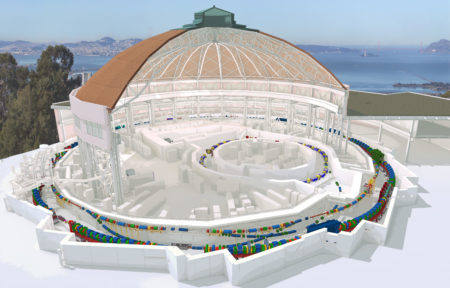 Every year comes with a few surprises, and last year was no exception. I certainly did not expect a year ago that I would be writing this message as the interim director of the ALS but am excited to have this opportunity and proud of what we have accomplished this year.
Every year comes with a few surprises, and last year was no exception. I certainly did not expect a year ago that I would be writing this message as the interim director of the ALS but am excited to have this opportunity and proud of what we have accomplished this year.
After a couple of years with severe user operation restrictions because of the COVID pandemic, we have been transitioning back to full, in-person user operations and hosted more than 1800 users last year, including many who have continued to use the ALS remotely using new collaboration tools that were developed during the pandemic. We have also restarted our fellowship programs, which host about 15–20 postdoctoral fellows and PhD students at the ALS annually to work closely with beamline scientists, receive training in x-ray techniques, and pursue their own research. Scientifically, we have had an excellent year with exciting research characterizing electronic properties in operando, resolving and correlating nanoscale chemical and structural properties in catalysts, batteries, and fuel cells, and identifying biological mechanisms that may lead to new treatments.
I joined the ALS 25 years ago as a postdoc with a goal to learn a bit more about a new (at that time) measurement technique called X-PEEM. Developing this technique and its applications to magnetism and other areas has been my research focus since then. As a microscopist I have also developed and relied on computational tools to manage and analyze large multidimensional datasets, something which is becoming increasingly common at ALS beamlines.

Living in California had always been a dream of mine because of its amazing nature, its open and friendly culture, and perhaps also because of the stunning sunsets over the Pacific. I can still occasionally be found in the courtyard outside the ALS watching the sunset over the Golden Gate. When I am not at the ALS, I am enjoying day hikes with my family in local parks or multiday adventures in the backcountry of our amazing National Parks.
You may have seen me in various roles at the ALS, as a beamline scientist at several beamlines but especially the X-ray Photoemission Electron Microscopy beamline 11.0.1.1, as a deputy of the Experimental Systems Group (that was a few years ago when we looked a little different organization-wise), and more recently as the deputy for science. It has been an interesting journey, and I am privileged to have seen the ALS grow up. I am even more excited to be around as we are building a new accelerator and new beamlines as part of the ALS-U project, which will allow many flavors of measurements which we can’t do today.

This broad renewal of our aging accelerator infrastructure will ensure the continued operation of the ALS for years to come. The ALS-U project will also build several new beamlines that are designed to use the 100-fold higher brightness of the new ring. Last fall, the ALS-U project reached an important milestone, CD-3 or Critical Decision 3. This milestone signals our funding agency’s, DOE’s, approval to begin construction and emphasizes DOE’s full support of our scientific and technical work. This is clearly an exciting time, but it will also result in increased impacts on our operations and our user program. Longer shutdowns will be needed twice annually for the installation of major components of a new accumulator ring, and we are preparing for a one-year dark time of the ALS, currently expected to start in fall 2025, for the installation of the new storage ring.
ALS-U has been the brainchild of many, but I would like to mention here two in particular—Steve Kevan, our previous director, who as the ALS deputy for science developed the science case for the upgrade of the ALS and then as the ALS director and together with the ALS-U team shepherded the project to the point that we are now beginning construction, and Howard Padmore, the previous group leader of the Photon Science Development Group, who oversaw the design and later operation of many current ALS beamlines and whose ideas were incorporated into the design of the ALS-U project beamlines. With their retirements last year we have lost two central figures who inspired many of the methods and tools that are used today by our user community and who created the culture of the ALS of serving our community through creativity in the development of instrumentation, excellence in research, and collaborative partnerships with our user community. Our mission to develop world-leading instrumentation continues, and DOE recently recognized one of our early career scientists, Antoine Wojdyla, with a prestigious early career award. This award and the work of many early career scientists are setting the foundation for a new ALS.
The upgrade of the ALS through the ALS-U project is one critical step for us, but many more will follow to realize our vision for the ALS. This summer the ALS will be holding workshops associated with the ALS User Meeting to articulate this vision beyond ALS-U. Users and staff of the ALS will be invited to share their scientific needs and ideas that will shape new instrumentation and infrastructure developments that we aim to develop after the ALS-U dark time and that will be designed to leverage the revolutionary improvement in accelerator brightness. I would like to invite the ALS community to participate in these workshops and contribute to our vision for the ALS.